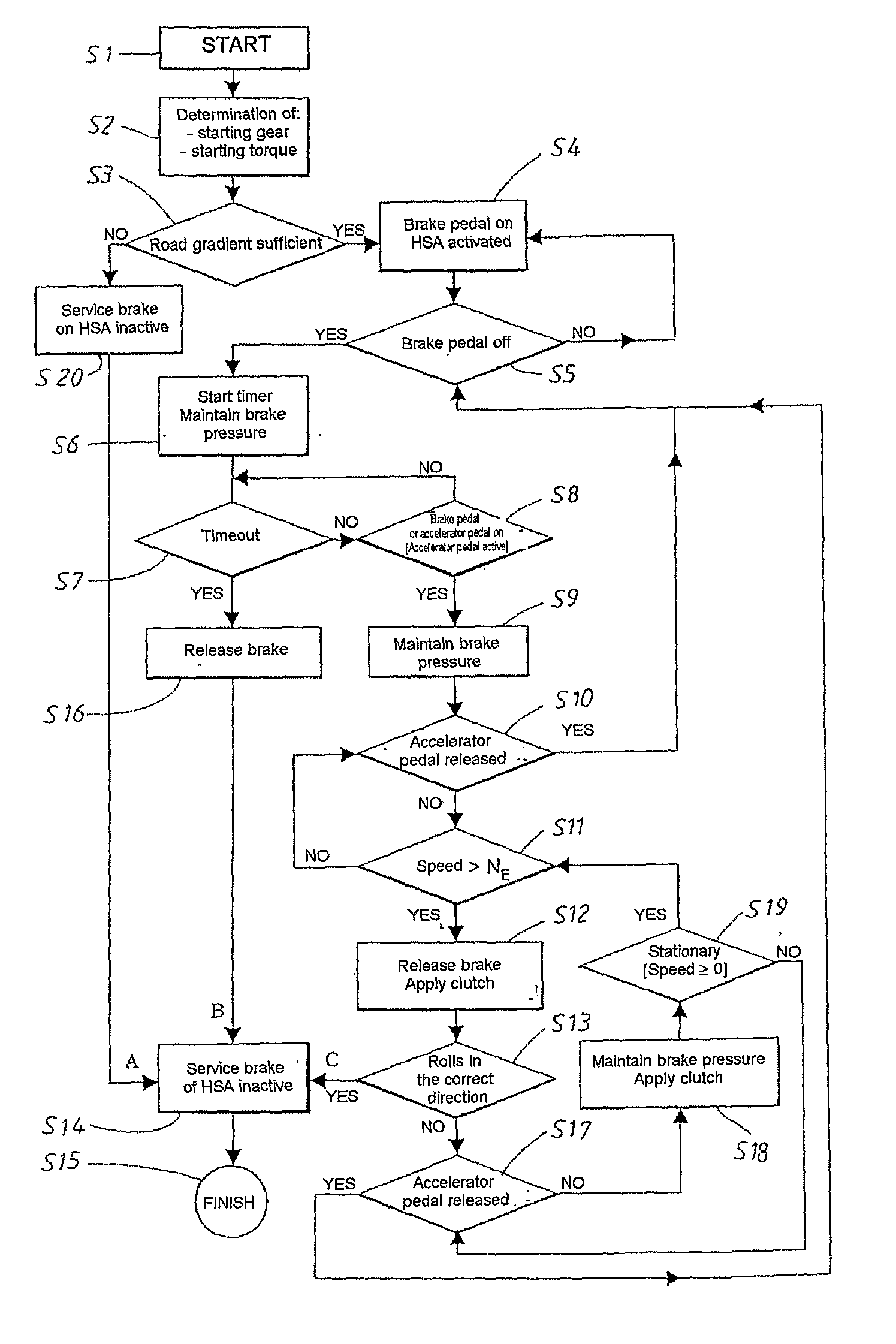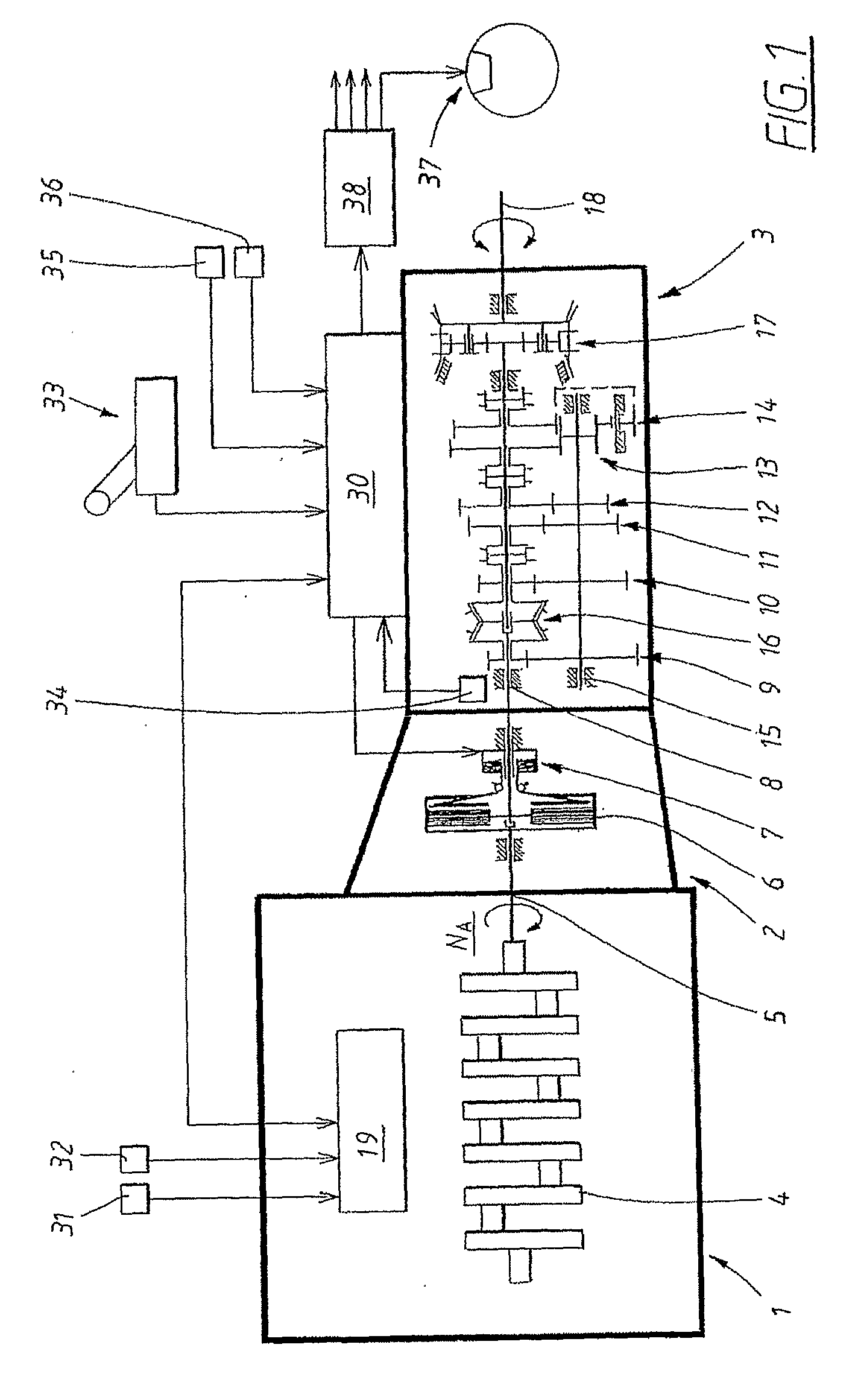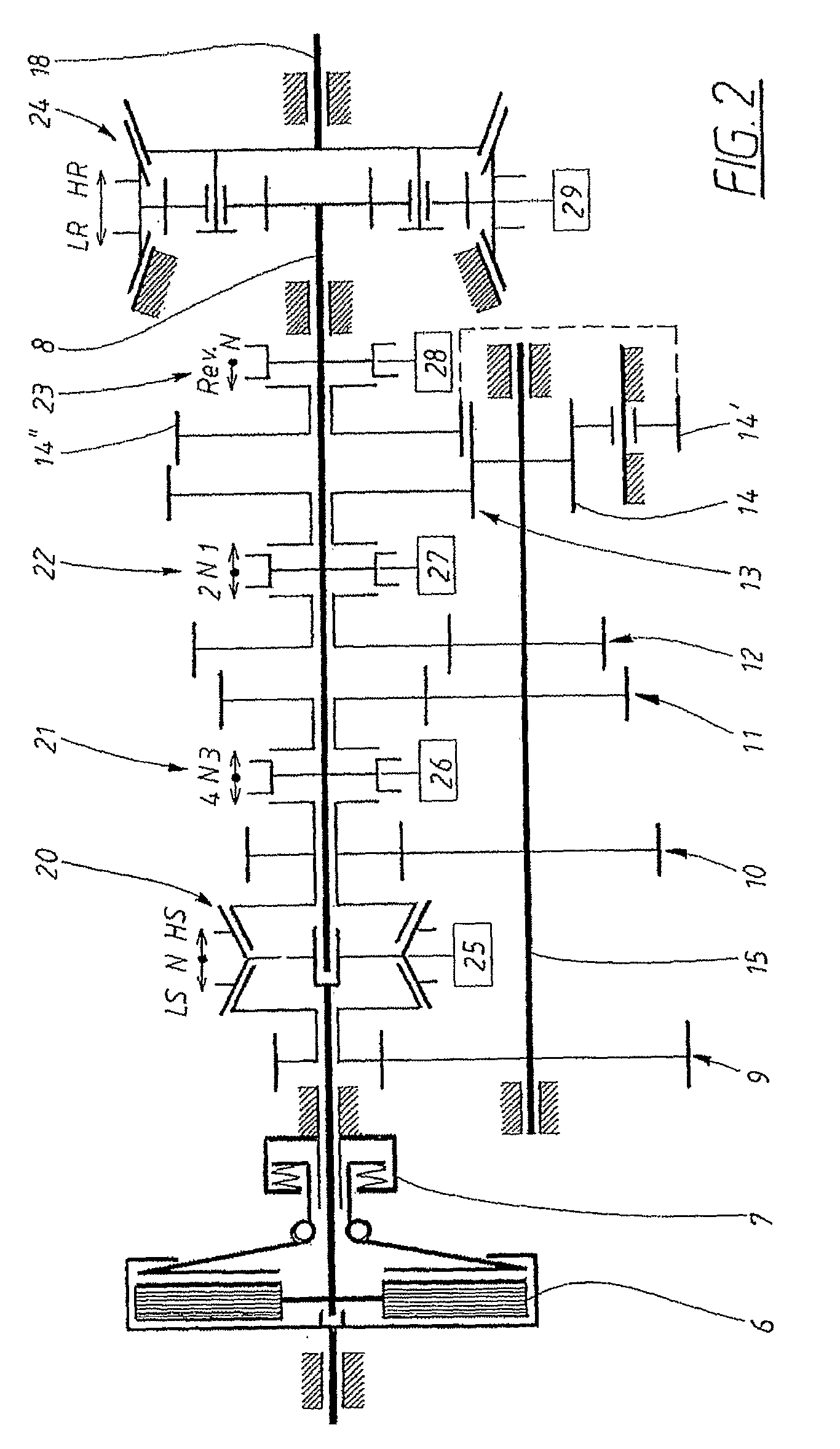Method and device for hill start
a technology of a start device and a hill start, which is applied in the direction of brake systems, machines/engines, gearing, etc., can solve the problems of difficult or impossible for the driver to know precisely how a certain system works, near accidents, and low reliability
- Summary
- Abstract
- Description
- Claims
- Application Information
AI Technical Summary
Benefits of technology
Problems solved by technology
Method used
Image
Examples
Embodiment Construction
[0039]FIG. 1 shows a schematic representation of the device according to an embodiment of the invention. The device comprises an engine 1, a clutch device 2 and a stage-geared automated gearbox 3. The engine exemplarily comprises a crankshaft 4 and an output shaft 5 provided with a flywheel (not shown in the figure) that is coupled to a single-plate dry disk clutch 6. The clutch is provided with a pneumatic piston / cylinder device 7, by means of which the clutch can be engaged and disengaged. The gearbox comprises an input shaft 8 which, via a number of gearwheel pairs 9, 10, 11, 12, 13, can drive an intermediate shaft 15. The gearwheel pairs 10, 11, 12, 13 represent four unsynchronized forward gears, and the gearwheel arrangement 14, 14′, 14″, with three gearwheels represents a reverse gear. In addition, the gearbox comprises a synchronized split gear 16 with a low gear stage LS and a high gear stage HS and also what is known as a range gear 17 for shifting between low range LR and ...
PUM
 Login to View More
Login to View More Abstract
Description
Claims
Application Information
 Login to View More
Login to View More - R&D
- Intellectual Property
- Life Sciences
- Materials
- Tech Scout
- Unparalleled Data Quality
- Higher Quality Content
- 60% Fewer Hallucinations
Browse by: Latest US Patents, China's latest patents, Technical Efficacy Thesaurus, Application Domain, Technology Topic, Popular Technical Reports.
© 2025 PatSnap. All rights reserved.Legal|Privacy policy|Modern Slavery Act Transparency Statement|Sitemap|About US| Contact US: help@patsnap.com



